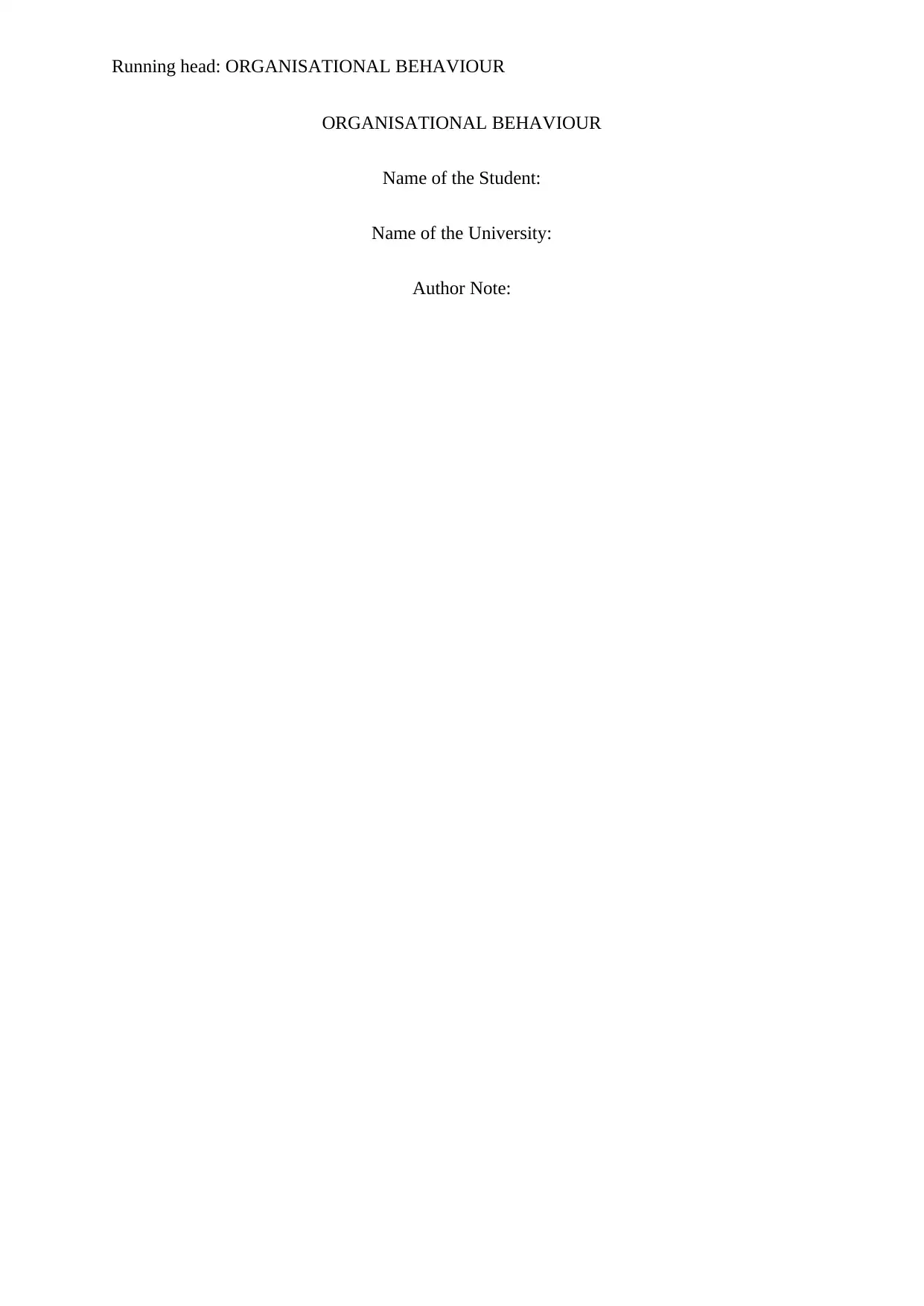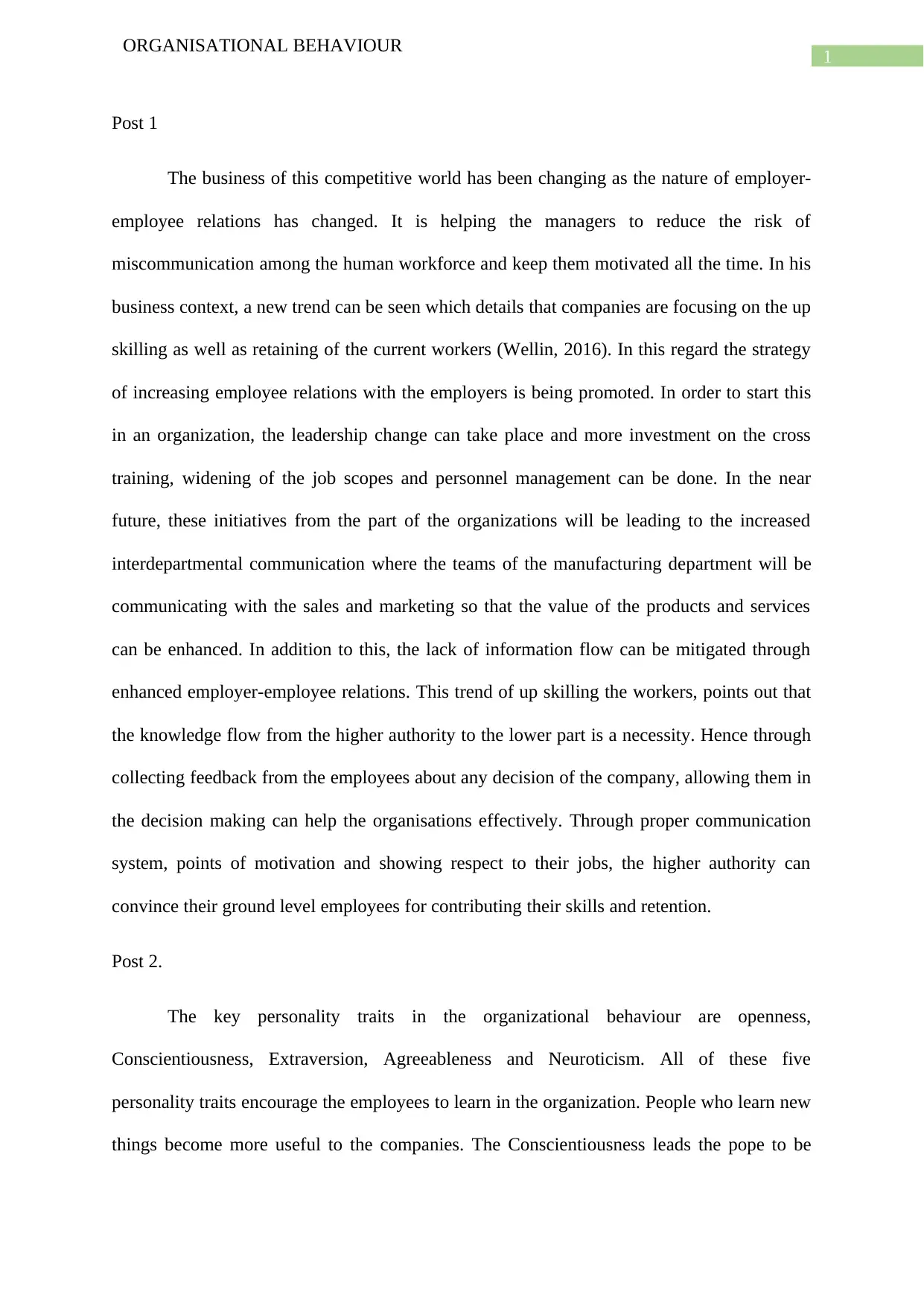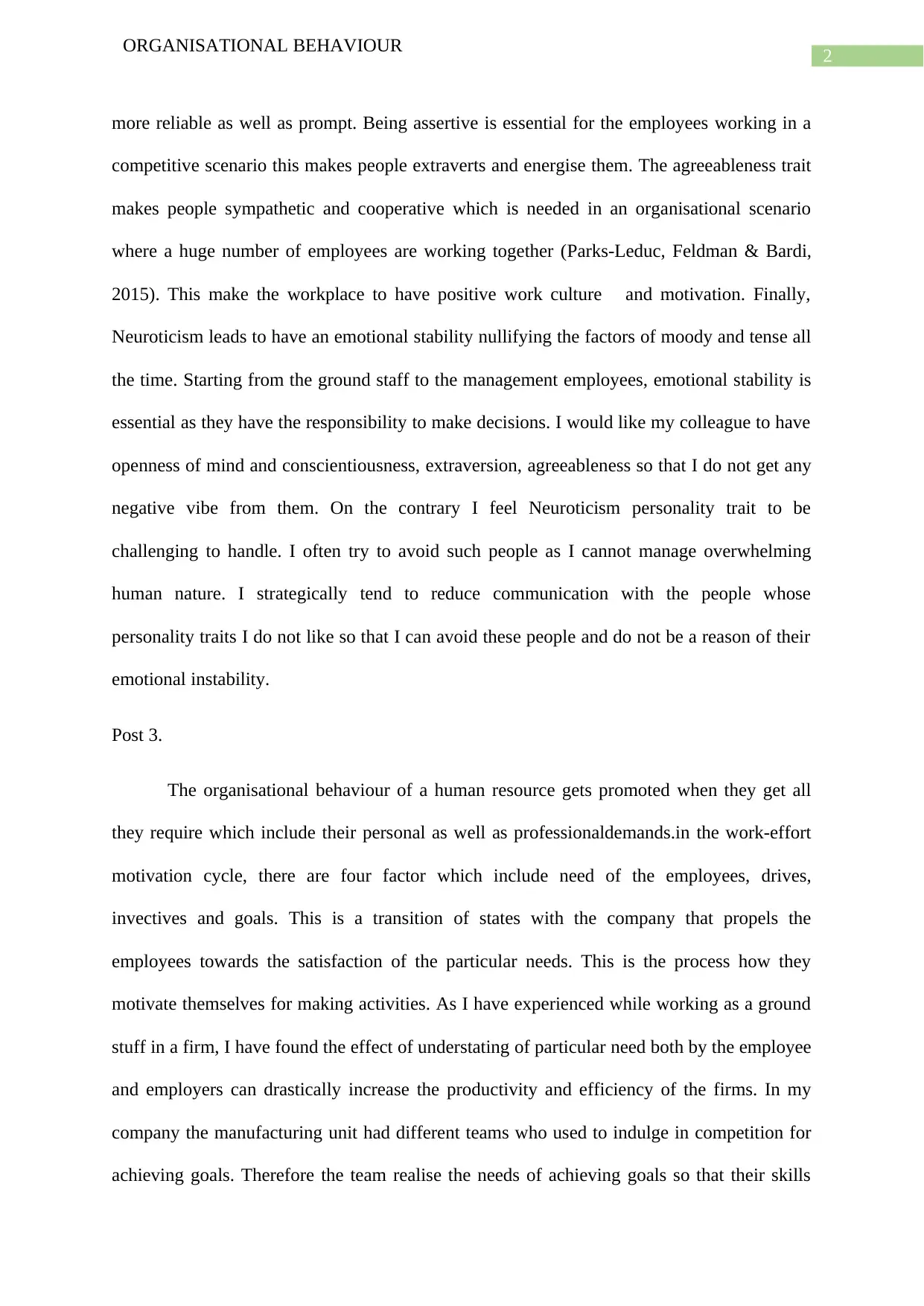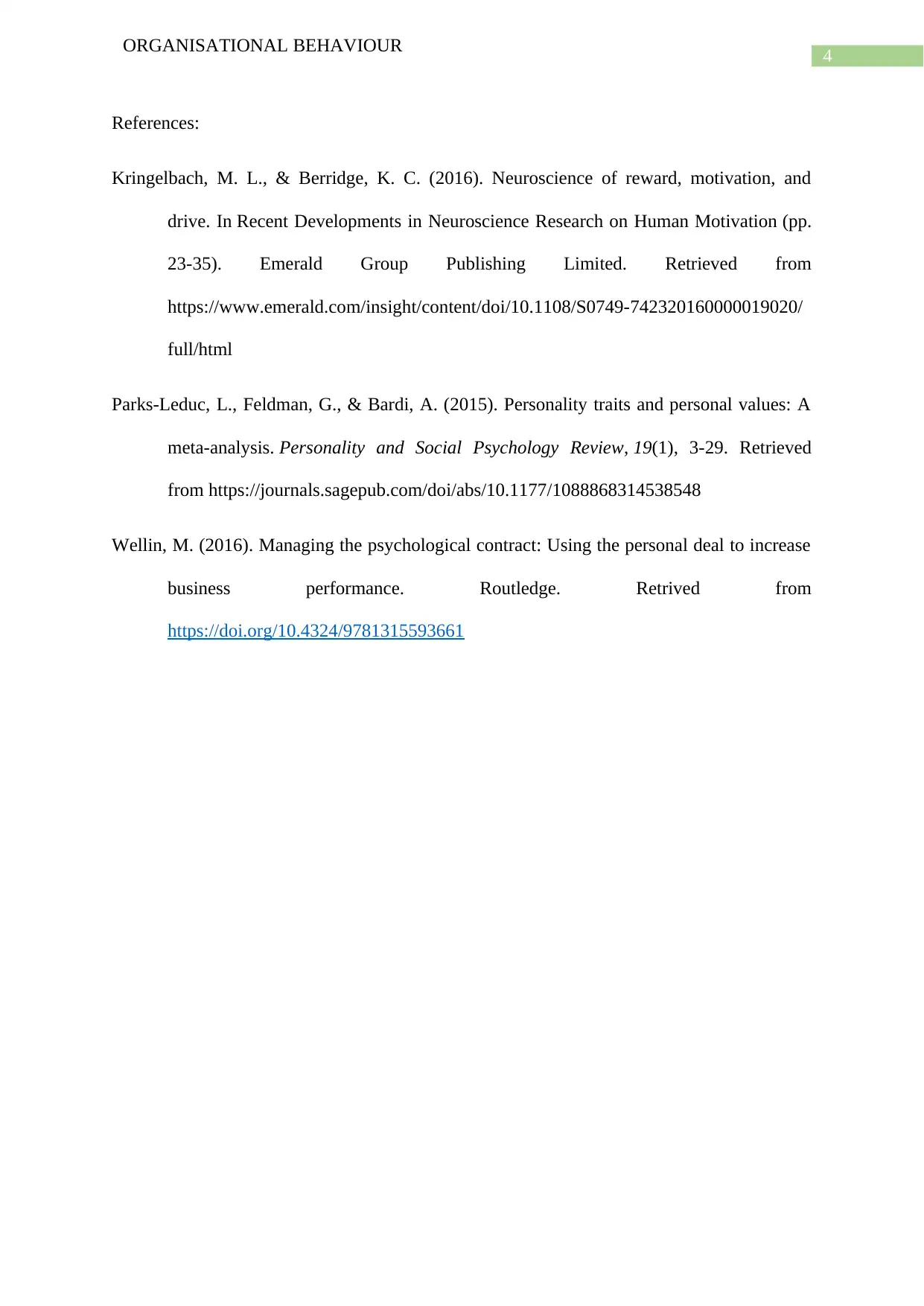University Name MGT210: Organizational Behavior Discussion Forum
VerifiedAdded on 2022/10/11
|5
|974
|39
Discussion Board Post
AI Summary
This discussion post, contributed by a student, addresses key concepts in organizational behavior. The post begins by examining the evolving nature of employer-employee relations in a competitive business environment, emphasizing the importance of upskilling, employee retention, and improved communication. The student discusses the role of leadership changes, cross-training, and expanded job scopes in fostering positive employee relations. The post then delves into the five key personality traits—openness, conscientiousness, extraversion, agreeableness, and neuroticism—and their impact on workplace dynamics. The student shares personal preferences regarding these traits and how they influence interactions with colleagues. Finally, the post explores the work-effort motivation cycle, highlighting the interplay of employee needs, drives, incentives, and goals. The student provides examples from their experience, illustrating how understanding employee needs and providing appropriate incentives can significantly boost productivity and efficiency within a firm. The post references relevant academic sources to support its arguments.
1 out of 5












![[object Object]](/_next/static/media/star-bottom.7253800d.svg)